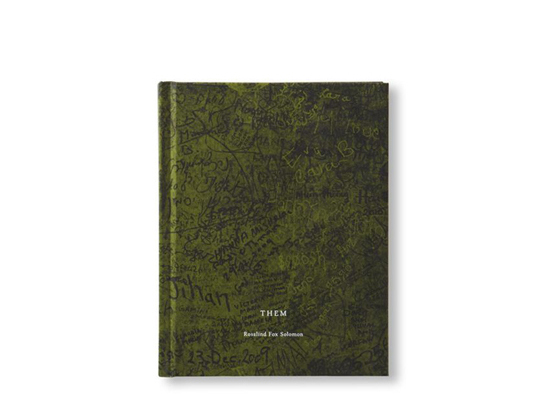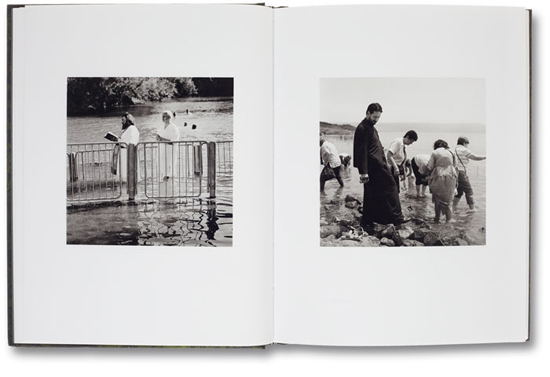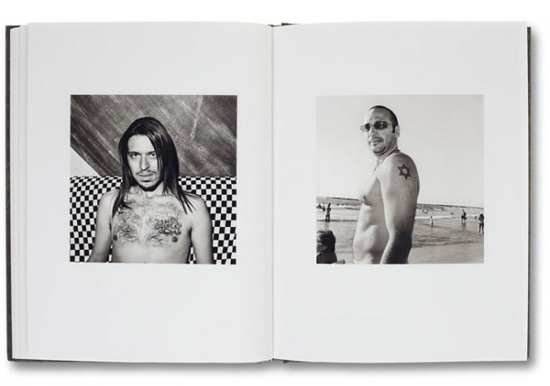Them by Rosalind Fox Solomon
 With the support of the Brooklyn Museum, Rosalind Fox Solomon, one of twelve internationally acclaimed photographers who worked on the ‘This Place’ project, explored the complexity of Israel and the West Bank in her book ‘Them’. As Solomon photographed, she learned more about the complexity of the region, and her book was ultimately filled with portraits of people identifying with various backgrounds. The title makes the work even more compelling Solomon states, “’Them’, the title of my book, is everyone because I feel that everyone is a Them. People talk about Them, meaning the other, and it is generally in a derogatory way. And I saw this happening with all kinds of people that met.” By naming everyone as “the other” she is able to draw comparisons between the various groups in the region, as well as all humanity.
With the support of the Brooklyn Museum, Rosalind Fox Solomon, one of twelve internationally acclaimed photographers who worked on the ‘This Place’ project, explored the complexity of Israel and the West Bank in her book ‘Them’. As Solomon photographed, she learned more about the complexity of the region, and her book was ultimately filled with portraits of people identifying with various backgrounds. The title makes the work even more compelling Solomon states, “’Them’, the title of my book, is everyone because I feel that everyone is a Them. People talk about Them, meaning the other, and it is generally in a derogatory way. And I saw this happening with all kinds of people that met.” By naming everyone as “the other” she is able to draw comparisons between the various groups in the region, as well as all humanity. While the goal of the project is to humanize, and equalize the region, at times the square frame hinders the viewer’s understanding. The close crops decontextualized the images from where they were taken. This does play up the notion that we are ALL them, the other, but it does not allow the viewer to enter the region, as a place. Although, there are times in which the subject pictured is all one needs. But in these instances it is universal human emotion that fills the frame.
While the goal of the project is to humanize, and equalize the region, at times the square frame hinders the viewer’s understanding. The close crops decontextualized the images from where they were taken. This does play up the notion that we are ALL them, the other, but it does not allow the viewer to enter the region, as a place. Although, there are times in which the subject pictured is all one needs. But in these instances it is universal human emotion that fills the frame. With this premise, Solomon explores not only the outer persona her subjects project, but also to attempts to show elements of what is going on inside these people. This complexity is most successfully explored through the text Solomon disperses throughout the book. Typed at the bottom of what at first glace of blank pages, the texts paces the viewer, and asks that she contemplate the history, sociology, and the psychology that influences not only the people of this region, but all humans. One of the more compelling aspects of design is that when the viewer lays the book flat to read the text, the shadow of the square images from the back pages shows through. These ghost images remind the viewer that while the text visually stands alone, it is not separate from the photographs, but linked to the human lives Solomon documented.
With this premise, Solomon explores not only the outer persona her subjects project, but also to attempts to show elements of what is going on inside these people. This complexity is most successfully explored through the text Solomon disperses throughout the book. Typed at the bottom of what at first glace of blank pages, the texts paces the viewer, and asks that she contemplate the history, sociology, and the psychology that influences not only the people of this region, but all humans. One of the more compelling aspects of design is that when the viewer lays the book flat to read the text, the shadow of the square images from the back pages shows through. These ghost images remind the viewer that while the text visually stands alone, it is not separate from the photographs, but linked to the human lives Solomon documented.
By Jennie Castle